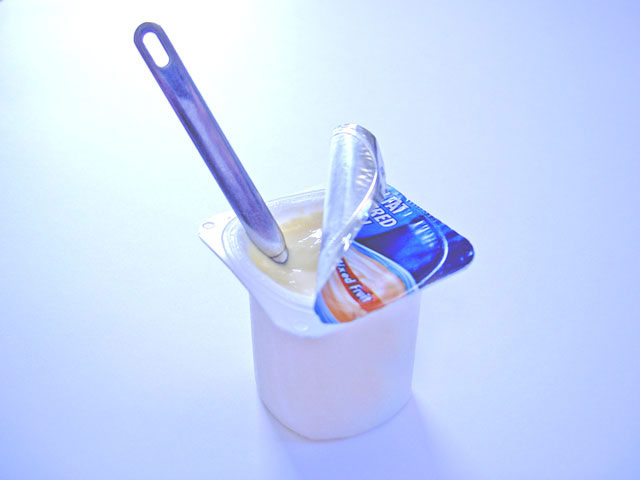Yogurt Culture Evolves

As our yogurt culture evolves, so do the bacteria involved in making it, ridding themselves of extra genes and in the meantime giving scientists a glimpse of the evolutionary process.
Scientists have sequenced the genome of Lactobacillus Bulgaricus, a group of bacteria involved in making yogurt.
Originally associated with plants, this bacteria is specializing to make itself more comfortable in its current environment: fermented milk.
Yogurt can be traced back to 3,200 years before Christ. Looking at the genome, scientists have found traces of adaptation in a strain called L. Bulgaricus over time.
"The interpretation of what we see is that this bacterium has eliminated, and still is in the process of eliminating, genes that it doesn’t need any longer," such as those involved in the metabolism of sugars of plant origin," said study leader Maarten van de Guchte of Institut National de la Recherche Agronomique in France.
L. Bulgaricus is believed to have been a class of bacteria that lived among plants but somehow found its way into dairy.
"We think they may have lived on the surface of plants (leaves), maybe grass," van de Guchte said. "Milk may have become spontaneously [and] unintentionally infected through contact with the plants, or bacteria may have been transferred via the udder of domestic milk-producing animals."
Sign up for the Live Science daily newsletter now
Get the world’s most fascinating discoveries delivered straight to your inbox.
The origin of yogurt goes back to ancient Middle Eastern cultures that used it to preserve milk. The live bacteria in yogurt are thought to have many health benefits , such as prevention of certain infections, calming of lactose intolerance, and lessening diarrhea.
"As the bacterium adapts to this environment, throwing out the 'ballast' of genes it doesn’t need any longer, it may gain in performance (growth rate)," van de Guchte told LiveScience. "This would mean that yogurt fermentation using these “modern” bacteria is probably [faster] than it would have been initially."
The study was detailed in a recent issue of the journal for the Proceedings of the National Academy of Sciences.










